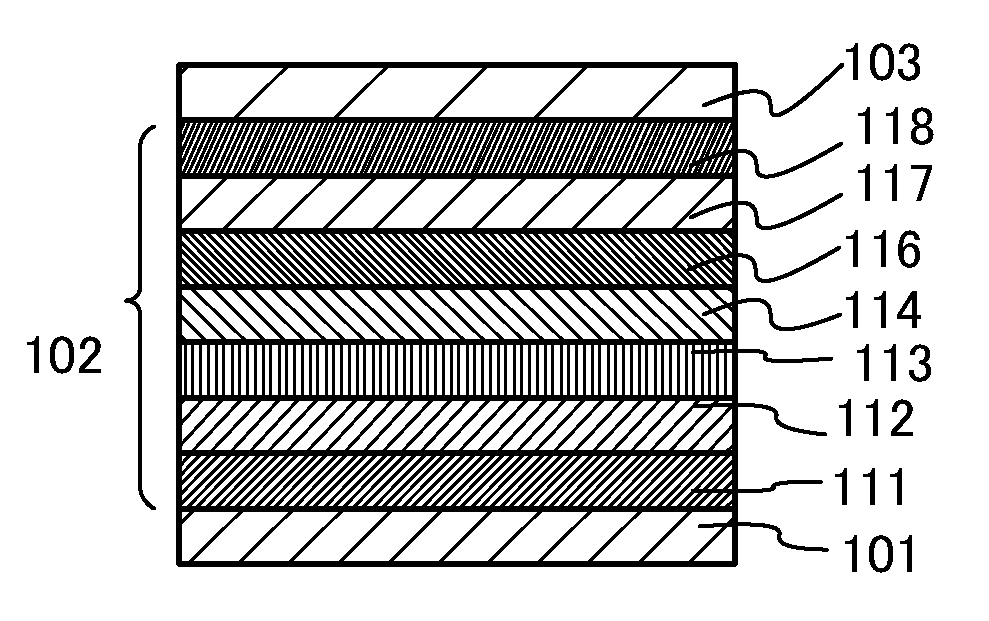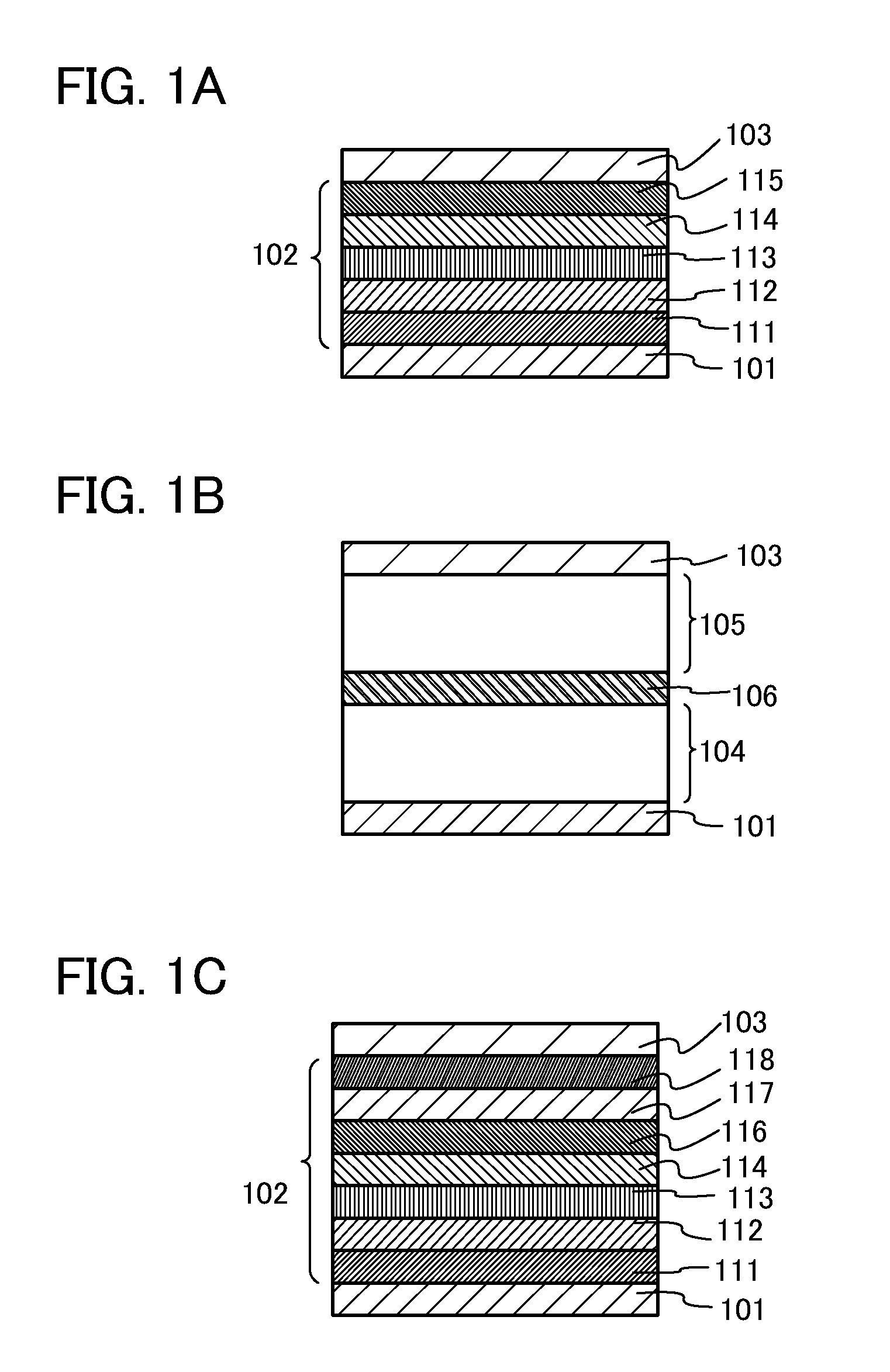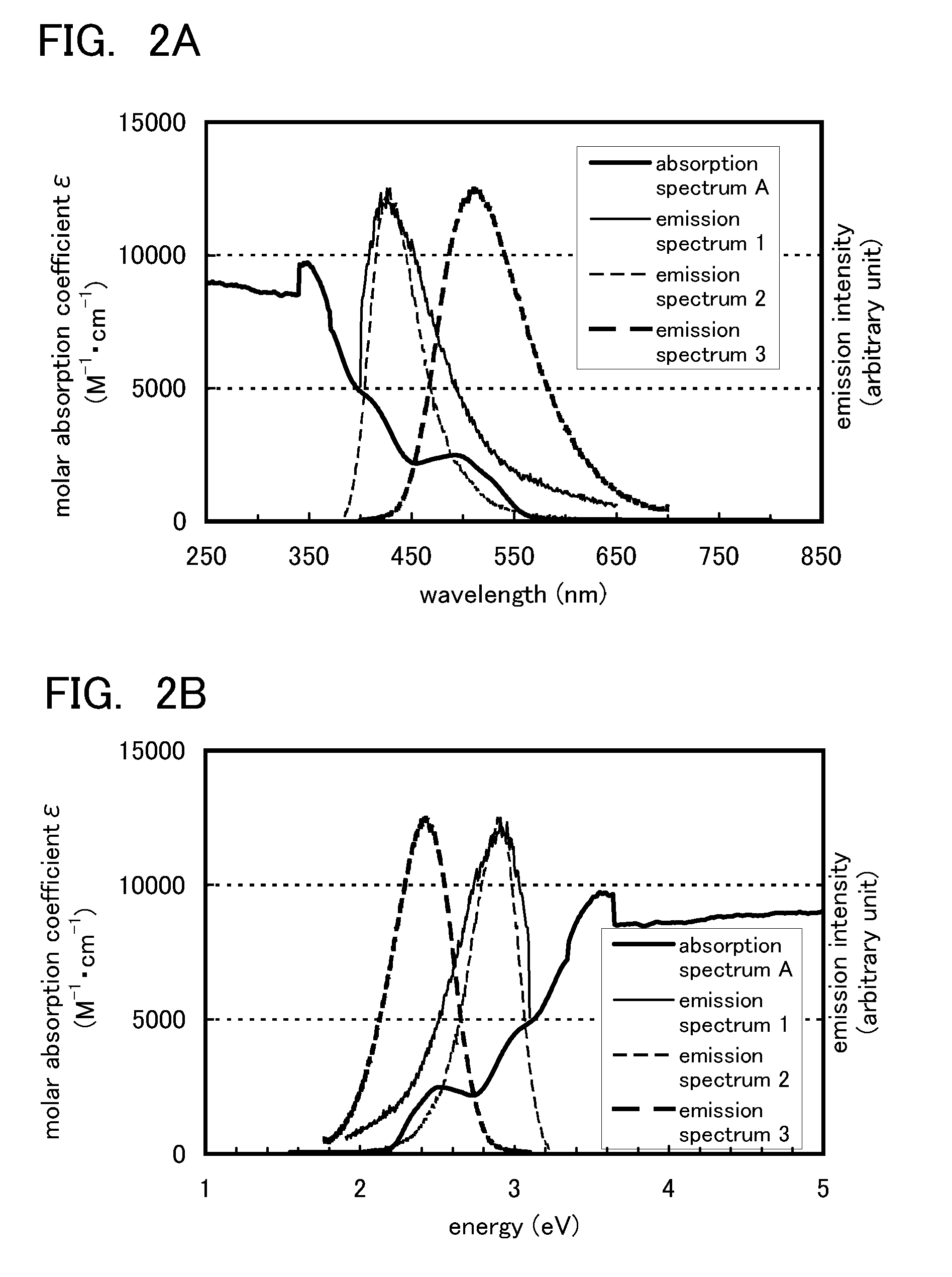Light-emitting element
- Summary
- Abstract
- Description
- Claims
- Application Information
AI Technical Summary
Benefits of technology
Problems solved by technology
Method used
Image
Examples
embodiment 1
[0101]In this embodiment, a light-emitting element in accordance with one embodiment of the present invention will be described. The light-emitting element of this embodiment includes a light-emitting layer including a guest as a light-emitting substance and a host in which the guest is dispersed. Specifically, a phosphorescent compound is used as the guest and a first organic compound and a second organic compound are used as hosts. In addition, the combination of the first organic compound and the second organic compound forms an exciplex.
[0102]In this embodiment, preferably, the level of a triplet excitation energy (T* level) of each of the organic compounds used as hosts is higher than that of the guest. This is because, when the T* level of the host is lower than that of the guest, the triplet excitation energy of the guest, which is to contribute to light emission, is quenched by the host and accordingly the emission efficiency is decreased.
[0103]As described above, when the T...
example 1
[0182]In this example, an example of a combination of a first organic compound, a second organic compound, and a phosphorescent compound which can be used for a light-emitting element in accordance with one embodiment of the present invention will be described with reference to FIGS. 2A and 2B.
[0183]The phosphorescent compound used in this example was bis(3,5-dimethyl-2-phenylpyrazinato)(dipivaloylmethanato)iridium(III) (abbreviation: [Ir(mppr-Me)2(dpm)]). The first organic compound used in this example was 2-[3-(dibenzothiophen-4-yl)phenyl]dibenzo[f,h]quinoxaline (abbreviation: 2mDBTPDBq-II). The second organic compound used in this example was 4,4′-di(1-naphthyl)-4″-(9-phenyl-9H-carbazol-3-yl)triphenylamine (abbreviation: PCBNBB). Chemical formulae of the materials described above are shown below.
[0184]FIGS. 2A and 2B each show an ultraviolet-visible absorption spectrum (absorption spectrum A) of [Ir(mppr-Me)2(dpm)] that was the phosphorescent compound, in a dichloromethane soluti...
example 2
[0190]In this example, an example of a combination of a first organic compound, a second organic compound, and a phosphorescent compound which can be used for a light-emitting element in accordance with one embodiment of the present invention will be described with reference to FIGS. 3A and 3B.
[0191]The phosphorescent compound used in this example was (acetylacetonato)bis(4,6-diphenylpyrimidinato)iridium(III) (abbreviation: [Ir(dppm)2(acac)]). The first organic compound used in this example was 2mDBTPDBq-II. The second organic compound used in this example was PCBNBB. Chemical formulae of materials used in this example are shown below. Note that the chemical formulae of the materials used in Example 1 are not shown here.
[0192]FIGS. 3A and 3B each show an ultraviolet-visible absorption spectrum (absorption spectrum B) of [Ir(dppm)2(acac)] that was the phosphorescent compound, in a dichloromethane solution. The absorption spectrum was measured with the use of an ultraviolet-visible li...
PUM
 Login to View More
Login to View More Abstract
Description
Claims
Application Information
 Login to View More
Login to View More - R&D
- Intellectual Property
- Life Sciences
- Materials
- Tech Scout
- Unparalleled Data Quality
- Higher Quality Content
- 60% Fewer Hallucinations
Browse by: Latest US Patents, China's latest patents, Technical Efficacy Thesaurus, Application Domain, Technology Topic, Popular Technical Reports.
© 2025 PatSnap. All rights reserved.Legal|Privacy policy|Modern Slavery Act Transparency Statement|Sitemap|About US| Contact US: help@patsnap.com



